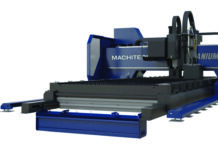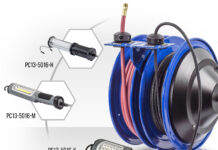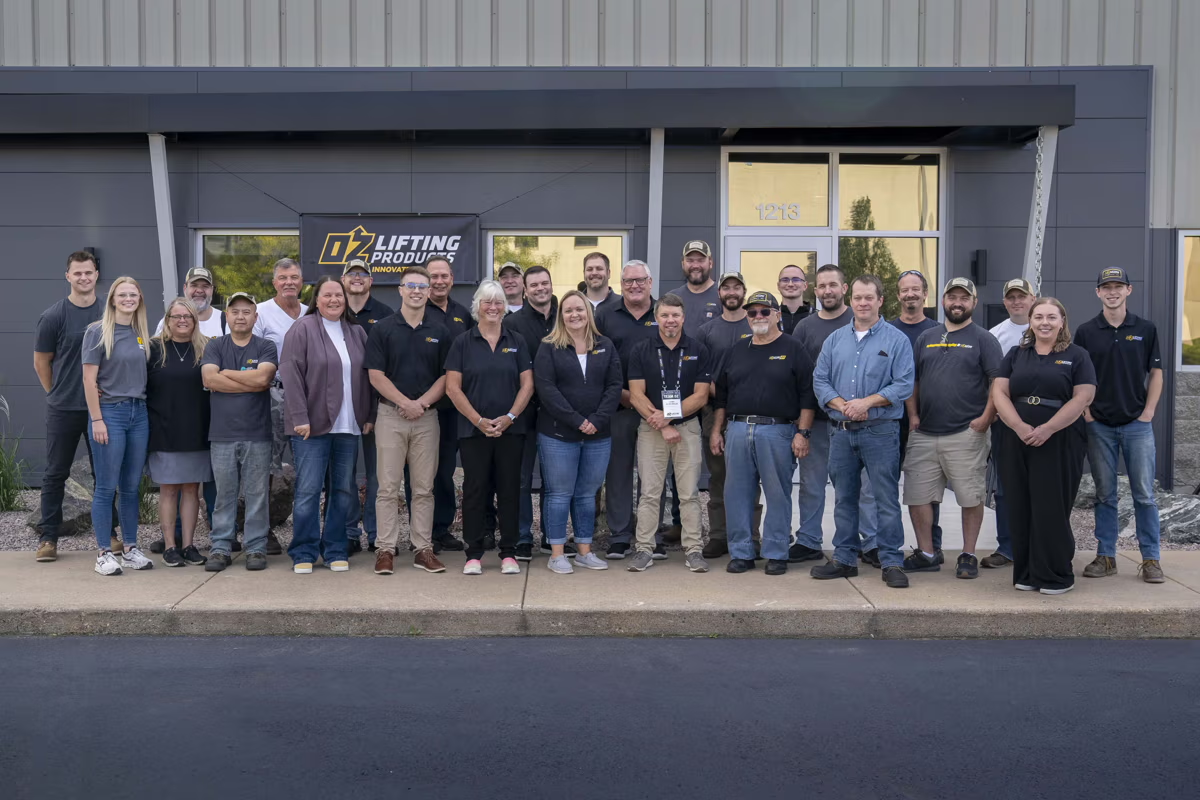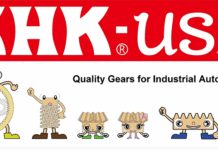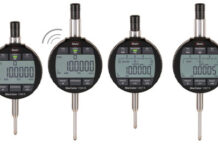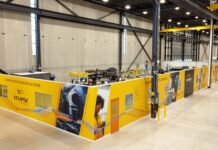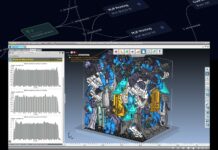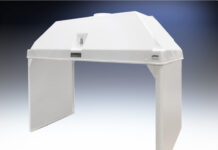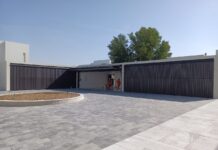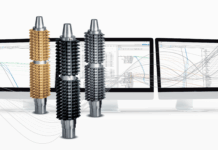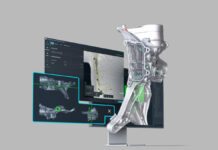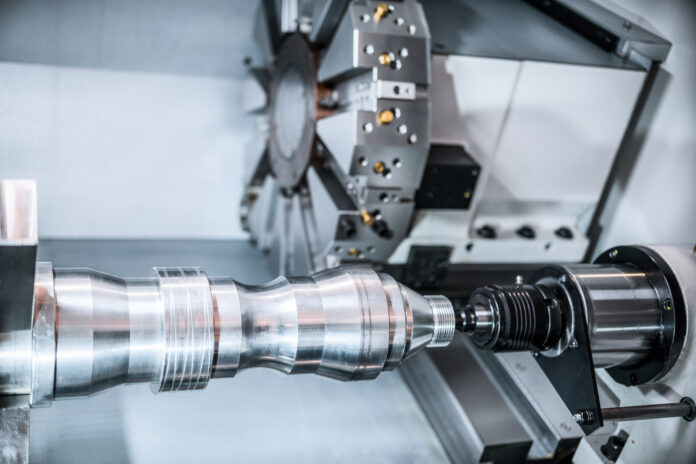As a leading choice for motion control, HEIDENHAIN highlights the advantages of encoders and details how interface electronics are enabling Industry 4.0 with encoder applications.
Where magnetic encoders use positive and negative poles and optical encoders use light passing through a disc, inductive encoders are a little more complicated. Inductive encoders have charged coils that are passed over by a passive disc, modulating what charges the sensor receives. There are only a few companies in the world that have the expertise or technology to do it.
It makes sense that when there isn’t a need to spend on a high-end optical encoder, the most common thought is to look directly to magnetic encoders. Sometimes that’s the right move, but when using an inductive encoder is an available option, your search shouldn’t be limited to magnetic-or-optical. Inductive encoders offer a good middle ground, both in terms of what they can do and how much they cost. Let’s compare some of the strengths and weaknesses of optical, inductive, and magnetic style encoders and where they’re best applied.
Key Considerations for Selecting Which Encoder Device Is Best
Common Encoder Applications
If you’re looking for extreme accuracy or need to facilitate highly dynamic motion, optical encoders with their repeatable accuracy and resolution are the best choice. Examples of these kinds of applications include pick-and-place robots, telescopes, antennas and machine tool applications like a CNC lathe or mill.
Magnetic encoders are good for commodity-type projects where several of the same encoder are installed. Mining operations are a good example, where vibration goes beyond 30 or 40 Gs and debris is hard to avoid.
Inductive encoders combine the contamination and vibration insensitivity of magnetic with higher accuracy that approaches the level of optical solutions. They fit nicely in general automation systems and work well with different types of servo motors, medical applications like CT scanners and in the robotics industry.
 Environmental Factors
Environmental Factors
Where your encoders will be installed and what will be going on around them will always be something to consider. Because of the type of scanning, optical encoders do their best work in cleaner environments. However, it’s not always an issue because there are a lot of different mounting and sealing options that can be used to keep them clean.
As already mentioned, magnetic encoders are great in situations where vibration, anything over 30-40 Gs, and/or lots of contamination are a risk. One important thing to note about magnetic encoders is that their internal magnets can be interfered with if there’s a magnetic brake near the solution, which would then influence the signal being generated.
Inductive encoders are not concerned with magnetic fields and can also handle high levels of vibration or contamination while also providing additional accuracy over magnetic solutions. The biggest challenge with inductive encoders is ensuring that the gap between sensor and rotor is held throughout the operation of the application.
The Biggest Advantages
When you’re looking for the “best solution,” start with optical encoders. Their accuracy, repeatability and resolution capabilities are unmatched. They are the most common solution and have many variations to fit the needs of multiple applications. That said, if you have a higher accuracy requirement, but the application does experience high vibration or contamination, the best solution may be an inductive option.
If a low-cost solution is the goal, magnetic encoders are a good place to start. They’re compact enough to fit in tight spaces and they’re fairly inexpensive.
Inductive encoders are a kind of Goldilocks solution: not the most accurate, but enough for most applications, while also able to withstand various different environments and situations. Sure, inductive encoders are a little more difficult to understand, but their above-average accuracy paired with above-average resilience make them the ideal choice—for a number of applications. In 2015 HEIDENHAIN acquired AMO, arguably combining the two most successful makers of inductive encoders.
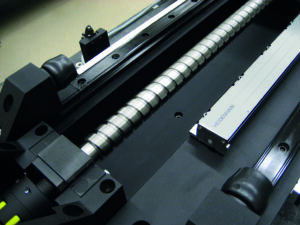 How Interface Electronics Are Enabling Industry 4.0
How Interface Electronics Are Enabling Industry 4.0
Just like encoders and motors have had to advance to meet the demands for higher throughput and smaller products, so have the interfaces they use to communicate. Automating production ultimately depends on the fast and accurate transfer of data. And the intensely competitive race to digitize and gather actionable data has put added emphasis on what an interface can handle.
What is an Encoder Interface?
EnDat is an example of these interfaces, a digital, bidirectional connection between the encoder and the subsequent electronics. Along with position values, EnDat can now transmit data for a variety of uses, including evaluation of an encoder’s function reserve through online diagnostics.
Encoder Interfaces Suited for Industry 4.0
Looking back at the evolution of the interface, we can see how it has adapted to the times of Big Data and Smart Manufacturing. The first version of EnDat, En
Dat 2.1, was introduced in 1995. It was a combination serial/analog signal with basic alarms, warnings and easy integration. The next generation, EnDat 2.2, was introduced in 2003 and marked the transition to purely serial data transmission. EnDat 2.2 also added a whole new layer of capabilities, transmitting actionable information on things like temperature sensors, functional safety and online diagnostics without sending a separate request signal.
A Future-Ready Interface
The recently released EnDat introduced even more data-based features and transmission capability. It’s a direct answer to the data, speed and accuracy demands of today’s world. Before we look at all the different ways interfaces work and how they add value, let’s look at the some of their latest capabilities.
High Data Volume and Speed:
- Transmission of position values and sensor data
- Send lists permit predefined communication for various operating scenarios
- Up to 15 additional information slots per communication
- Access to the encoder memory during normal operation
- Extensive system monitoring for Industry 4.0
- Automatic system installation and diagnostics
- Sensor data
- Short cycle times
- 15 µs can be achieved with very low position-measurement jitter
- High bandwidth
- 12.5 Mbit/s at 100 m cable length, or 25 Mbit/s at 40 m
Advanced Sensor Compatibility And Diagnostics:
- Electronic ID label for automatic system installation for the encoder, motor, and system
- Online encoder diagnostics
- Together with further sensor data, forms the basis for condition monitoring and predictive maintenance
- Mobile access to diagnostics
- Storage of operating status data
- Storage via the subsequent electronics
- Data acquisition through the encoder
Functional Safety:
- For safety-related applications up to SIL 3
- Black-channel communication
- Convenient implementation thanks to data separation for motion controller and safety controller
Encoder Interface Applications
Encoder interfaces like EnDat can be used with almost any encoder type or drive system and even some measuring tools—including several from within the HEIDENHAIN Family of Brands. Serial interfaces have proven versatile and effective across industries, and as technology has advanced there are specific modern applications where they are especially adding value.
Hardware EnDat Can Work With
Interfaces like EnDat can work with different measuring and scanning methods, both linear and rotary, depending on the optimal encoder for the application. These interfaces are also compatible with other equipment.
- Absolute or incremental positioning encoders
- Photoelectric, inductive or magnetic scanning encoders
- Singleturn encoders
- Multiturn encoders with gears
- Multiturn encoders with buffer battery backup
- Integrated encoder modules
- Touch probes
- Length gauges
- Cabling variety
- Hybrid cable technology
- Bus operation
- Integration of sensor boxes
- Additional sensors
- Sensors inside the encoder
- Sensors
Interface Compatible Equipment
A vast majority of major drive manufactures globally have seen the benefit of EnDat and included the interface with their current and future offerings. Each year, more solutions and implementations come to the market supporting various functions of EnDat. Beyond its inclusion in subsequent electronics, EnDat is also available with the other brands in The HEIDENHAIN Family of Brands:
- Leine and Linde
- RSF
- Numerik Jena
- AMO
Automation Interface Applications
Automation and robotics depend heavily on the transmission of fast, accurate uninterrupted data from the machinery to a control or hub where data is saved or analyzed. These capabilities make analyzing and maintaining uptime a huge value add in automation environments:
- HMC 2 hybrid cable
- Bus operation
- Sensor integration (e.g., easy connection of a temperature sensor inside the servomotor, with characteristic curve selection for a KTY 84-130 or PT 1000)
- Acquisition and storage of operating status data
- System information for automatic configuration
- Enhanced diagnostic capabilities
- Functional safety
Machine Tool Interface Applications
In the violent world of metalworking, interface hardware must be able to endure the vibration and contamination associated with tens of thousands of RPMs, coolant, chips and heat and still send accurate signals—a millimeter can make the difference between a good part and scrap. Here are some of the interface characteristics to look for:
- Mechanically robust cabling
- Integration of complex sensors and sensor boxes
- Multi-dimensional measurement technology
- System information for automatic configuration
- Enhanced diagnostic capabilities
- Storage of operating status data
- Functional safety
Electronics Industry Interface Applications
The level of accuracy and precision required in industries like front- and backend semiconductor work means everything from the weight of the wiring to high-resolution measurements must be in synch. Here are a few ways the right interface helps makes it possible:
- Weight reduction due to thinner cables and bus operation
- Multi-dimensional measurement technology
- System information for automatic configuration
- Enhanced diagnostic capabilities
- Storage of operating status data
Take a deeper dive into the evolution of interface electronics and the capabilities of systems like EnDat 3. From functional safety to advanced sensor transmission, the right interface unlocks to full force of Industry 4.0 in settings far and wide.
About HEIDENHAIN
DR. JOHANNES HEIDENHAIN GmbH, headquartered in Traunreut, Germany, develops and supports motion control feedback solutions for the machine tool, semiconductor, electronics assembly and test, metrology, automation, medical, energy, biotechnology and other global markets. HEIDENHAIN employs approximately 6,000 people worldwide in its core business activities. The North American subsidiary is HEIDENHAIN CORPORATION, headquartered in Schaumburg, IL, and San Jose, CA, and has been serving the U.S. industry for over 50 years.
Article by HEIDENHAIN




